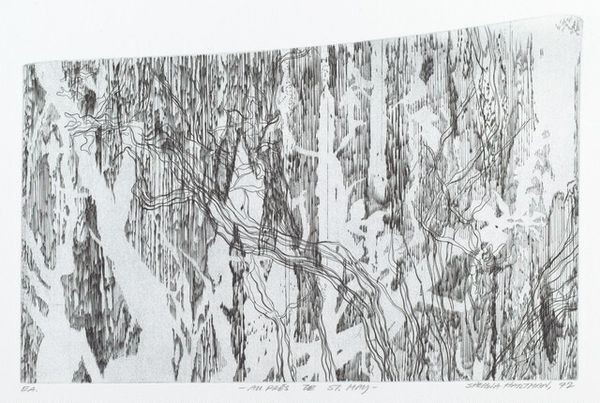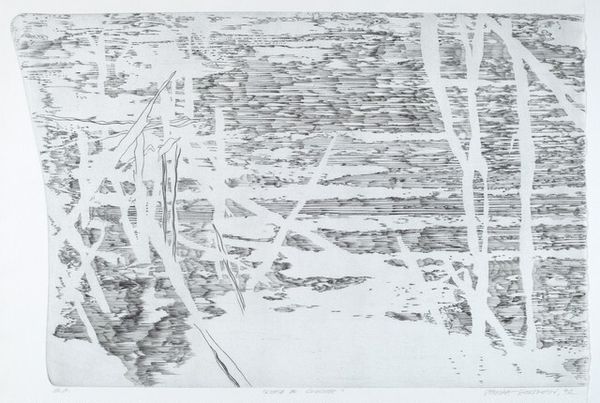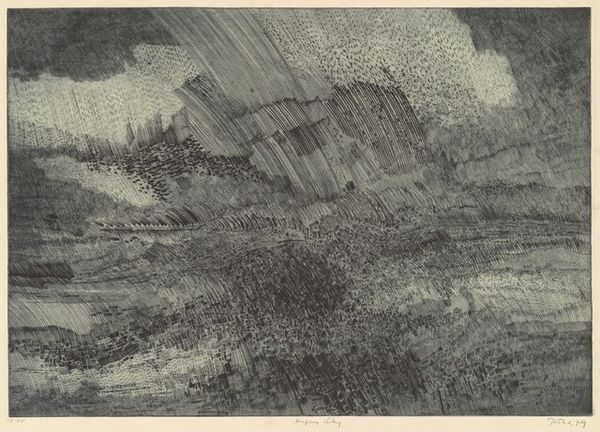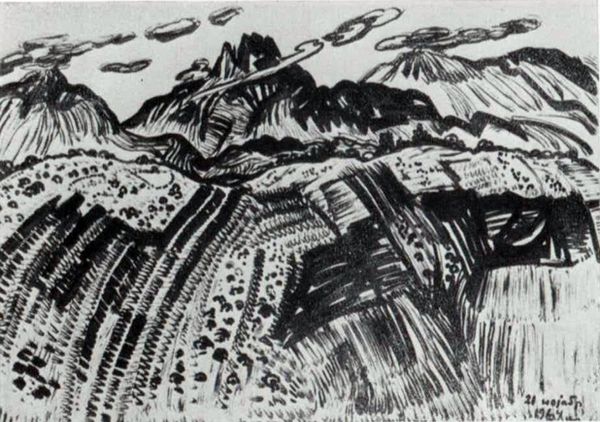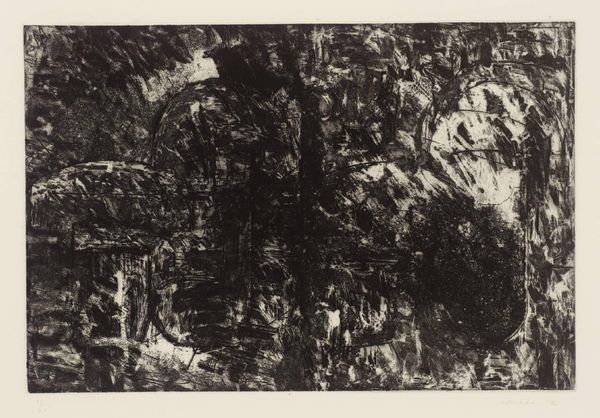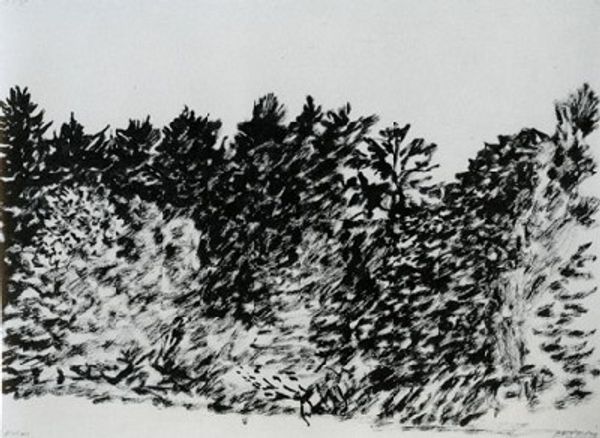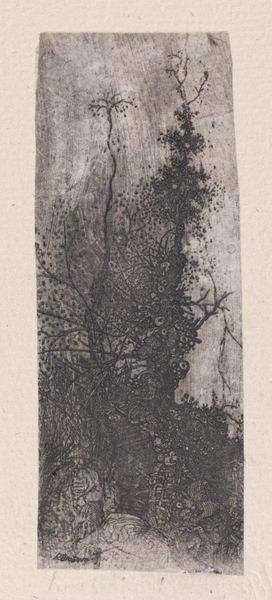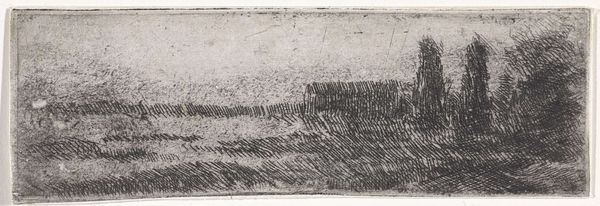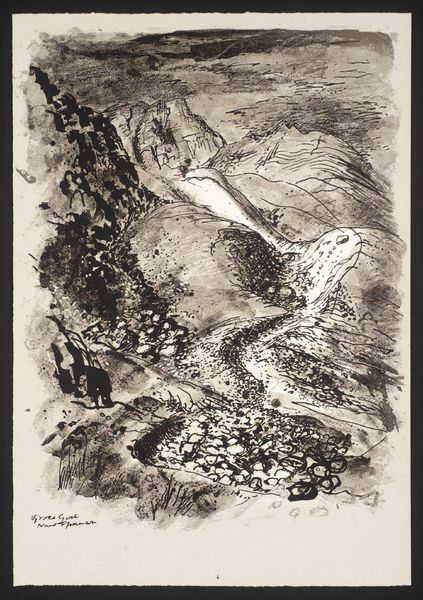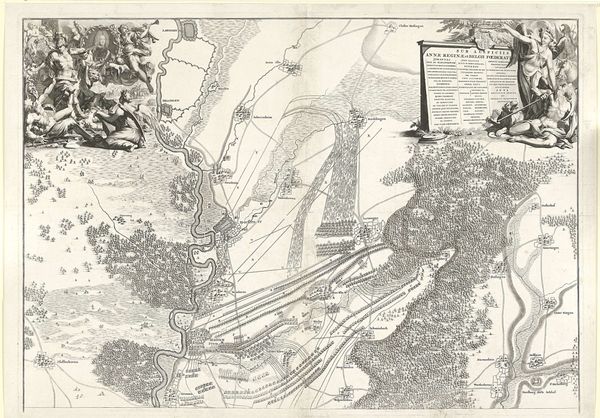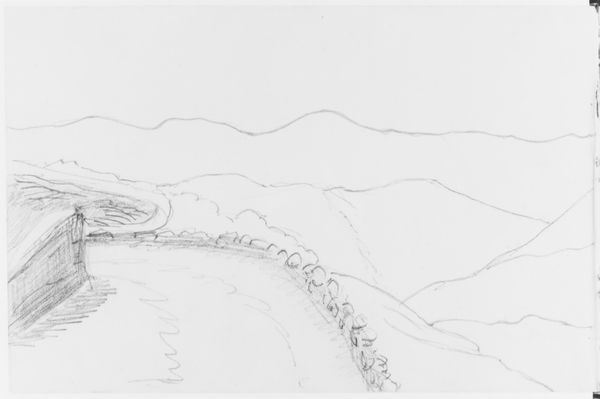
drawing, print, etching, ink
#
drawing
# print
#
etching
#
landscape
#
form
#
ink
#
geometric
#
line
#
realism
Copyright: National Gallery of Art: CC0 1.0
Editor: This is "Au bout de chemin," or "At the End of the Road," by Sheigla Hartman, created in 1973 using etching and ink. It's a pretty dense landscape, but there's something comforting about the strong vertical lines of the trees. How do you interpret this work? Curator: It is compelling, isn't it? Considering Hartman’s personal history, especially her experiences navigating a male-dominated art world, I read the density not as comforting but as a kind of visual resistance. The etching, with its intricate lines, creates a space that's hard to penetrate, almost a guarded sanctuary. Do you see how the light struggles to break through? Editor: I do, now that you mention it. There's a real contrast between the almost chaotic detail of the woods and the more open space above. Could that signify a certain… constraint, maybe? Curator: Precisely! And the title, "At the End of the Road," could speak to the limitations placed upon women artists, or any marginalized group, at the time. But the enduring strength of the trees – consider their form as a phallic symbol turned on its head, becoming almost an earth-mother figure, an embrace – speaks to a resilience, a claiming of space, wouldn't you agree? Editor: That’s a perspective I hadn’t considered. It changes my entire view of the piece. I initially saw it as simply a detailed landscape, but now it's laden with potential interpretations of social and personal struggle. Curator: And isn't that the power of art? It's not just about what we see on the surface, but the dialogues it opens about our shared and contested histories. Editor: Absolutely. I’ll definitely carry this deeper understanding with me. Thanks for shedding light on this piece!
Comments
No comments
Be the first to comment and join the conversation on the ultimate creative platform.
